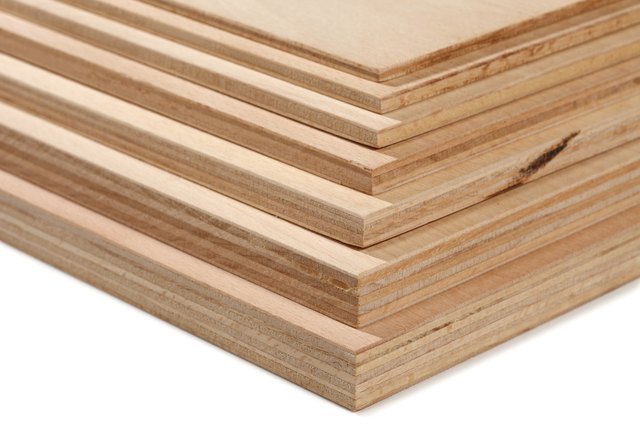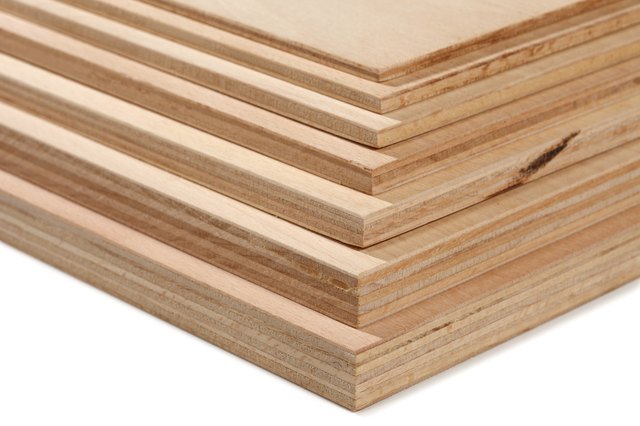Are you curious about how hot plywood can get? Well, you’ve come to the right place! Plywood is a versatile building material that is commonly used for various projects. But have you ever wondered what happens to plywood when it’s exposed to high temperatures?
Let’s dive into the world of plywood and uncover the answer to that burning question: how hot can plywood get? Whether you’re a DIY enthusiast or just someone who wants to learn something new, this article will provide you with the information you’re looking for.
So, grab your notepad and get ready to explore the fascinating relationship between heat and plywood. Let’s uncover the secrets behind the temperature limits of this popular construction material.

How Hot Can Plywood Get? Exploring the Heat Resistance of Plywood
Plywood is a versatile material commonly used in construction, furniture making, and other applications. However, when it comes to exposure to high temperatures, questions arise about its capacity to withstand heat. How hot can plywood get before it starts to warp, deform, or even catch fire? In this article, we delve into the heat resistance of plywood, examining its properties, how it reacts to heat, and the factors that influence its performance under elevated temperatures.
Understanding the Composition of Plywood
Before delving into the effects of heat on plywood, it’s essential to understand its composition. Plywood consists of several layers, or veneers, of thin wood that are glued together with the grains oriented perpendicular to each other. This construction provides plywood with exceptional strength and stability.
Each veneer is typically made from a species of wood known for its durability and resistance to moisture. Some common types include birch, oak, and pine. The adhesive used to bond the veneers together can be either water-based or resin-based, with the latter being more heat-resistant.
The Heat Resistance of Plywood: Explained
While plywood is generally known for its strength, it does have limits when it comes to heat resistance. The specific tolerance to heat can vary based on the type of plywood, the adhesive used, and the duration and intensity of the heat exposure.
Plywood is considered combustible, meaning it will eventually catch fire if exposed to high temperatures for an extended period. However, the ignition point of plywood is relatively high compared to other materials, making it less susceptible to spontaneous combustion. Typically, plywood can start to smolder at temperatures ranging from 572°F to 752°F (300°C to 400°C) and ignite at temperatures exceeding 752°F (400°C).
Factors Affecting Plywood’s Reaction to Heat
Several factors influence how plywood reacts to heat. These include:
1) Type of Plywood: Different plywood types have varying levels of heat resistance. Marine-grade plywood, for example, is engineered to withstand moisture and can handle higher temperatures compared to standard plywood.
2) Adhesive Used: The type of adhesive used in the plywood construction plays a crucial role in its heat resistance. Phenol-formaldehyde (PF) resin-based adhesives are known for their excellent high-temperature performance.
3) Moisture Content: Plywood with high moisture content is more susceptible to warping and deformation under heat. Thus, ensuring the plywood is properly dried before use is essential in increasing its heat resistance.
4) Thickness: Thicker plywood tends to have better heat resistance due to its increased mass and insulation properties.
5) Surface Protection: Coating the surface of plywood with fire-retardant finishes or paints can enhance its heat resistance.
Precautions and Tips for Working with Plywood in High-Temperature Environments
When working with plywood in environments with high temperatures, it’s important to take certain precautions to ensure safety and minimize damage. Here are some tips to consider:
1) Choose the Right Type of Plywood: Select plywood specifically designed for high-temperature applications, such as marine-grade plywood or plywood with PF resin-based adhesives.
2) Ensure Proper Installation: Follow recommended installation procedures to maintain the structural integrity and heat resistance of the plywood.
3) Provide Adequate Ventilation: Adequate ventilation can help dissipate heat and reduce the risk of heat buildup in enclosed spaces.
4) Use Fire-Resistant Coatings: Apply fire-resistant coatings or paints to the surface of plywood to enhance its heat resistance.
5) Regular Inspection: Regularly inspect plywood in high-temperature environments for any signs of warping, deformation, or degradation. Replace any damaged plywood promptly.
Conclusion
Plywood is a versatile material that exhibits decent heat resistance. However, it does have limitations and can combust at high temperatures. Understanding the composition of plywood, the factors that influence its reaction to heat, and taking necessary precautions when working with plywood in high-temperature environments are vital to ensure safety and optimal performance. By considering the type of plywood, adhesive used, moisture content, thickness, and surface protection, you can make informed decisions and mitigate potential risks associated with heat exposure. Remember, safety should always be the top priority when working with any materials in extreme conditions.”
Key Takeaways: How Hot Can Plywood Get?
- Plywood can withstand high temperatures up to 200°F (93°C) without significant damage.
- Exposure to extreme heat can cause plywood to warp, delaminate, or char.
- Fire-resistant or treated plywood can handle higher temperatures, usually up to 300°F (149°C).
- Thin plywood sheets are more vulnerable to heat damage than thicker ones.
- Proper installation and sealing can help protect plywood from heat-related issues.
Frequently Asked Questions:
As you delve into the world of woodworking and construction, it’s important to understand the limitations of plywood when it comes to heat. This FAQ section aims to answer common questions about how hot plywood can get and what happens when it reaches its limits.
1. What temperatures can plywood withstand?
Plywood is made from thin layers of wood glued together, and its heat resistance varies depending on the type of adhesive used and the wood species. Generally, most plywood can withstand temperatures up to 180°F (82°C) without significant damage. However, prolonged exposure to high temperatures can cause delamination, warping, or charring.
To ensure the longevity of plywood in high-temperature environments, it’s crucial to choose a plywood grade suitable for the intended application and consult the manufacturer’s guidelines or technical data for specific temperature limits.
2. Can plywood be used near fireplaces or wood-burning stoves?
While plywood can withstand normal exposure to heat, it should not be used in direct contact with fireplaces or wood-burning stoves. These appliances generate extremely high temperatures that can exceed the limits of plywood’s heat resistance. Instead, it’s advisable to use materials specifically designed for these conditions, such as fire-rated drywall or cement board.
If plywood is used in the vicinity of fireplaces or wood-burning stoves, it should be adequately protected with non-combustible materials, such as a layer of fire-resistant insulation or a ceramic tile barrier, to prevent overheating and reduce fire hazards.
3. What happens to plywood when it gets too hot?
When plywood is exposed to excessive heat, several undesirable effects can occur. The adhesive holding the layers of wood together may start to degrade, leading to delamination and weakening the structural integrity of the plywood. In extreme cases, the plywood may even catch fire or release toxic fumes.
High temperatures can also cause the wood layers to expand and contract, resulting in warping and distortion. This can make the plywood unsuitable for its intended use, compromising its strength and stability. Therefore, it’s essential to avoid subjecting plywood to temperatures that exceed its recommended limits.
4. Can plywood be used in saunas or steam rooms?
Using plywood in saunas or steam rooms is possible but requires careful selection and installation. It’s crucial to choose plywood specifically designed for moist environments and high humidity levels. Marine-grade plywood, for example, is a popular choice due to its water resistance and superior adhesive properties.
Additionally, proper sealing and finishing of the plywood surfaces are necessary to protect the wood from moisture penetration and to maintain its structural integrity. Adequate ventilation and regular maintenance are also essential to prevent mold or mildew growth and ensure the longevity of the plywood in such environments.
5. Can plywood handle heat from electrical components or appliances?
Plywood is not a suitable material for direct contact with heat-producing electrical components or appliances. Instead, it’s recommended to use materials designed for electrical insulation or heat dissipation, such as ceramic or fiberboard. These materials offer higher resistance to heat, reducing the risk of fire and the potential for damage to surrounding components or structures.
If using plywood is unavoidable in such scenarios, it should be adequately shielded and insulated from the heat source using non-combustible materials or electrical insulators. This helps ensure the safety and proper functioning of the electrical system while preventing potential heat damage to the plywood and surrounding areas.

5 Mistakes Buying Plywood – Don’t Waste Your Money!
Summary
Plywood can get really hot when exposed to direct sunlight or other heat sources. When it gets too hot, it can warp, crack, or even catch fire. The temperature at which this happens varies depending on the type and thickness of the plywood. It’s important to protect plywood from excessive heat to maintain its strength and integrity.
To prevent plywood from getting too hot, you can use shading devices like umbrellas or awnings to block direct sunlight. Applying a heat-resistant coating or paint can also help in reducing heat absorption. Regularly inspecting plywood for any signs of damage or warping is crucial to ensure its safety. Remember, taking proper care of plywood will make it last longer and keep it functional.
